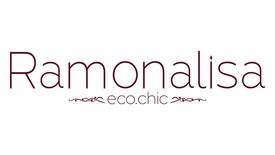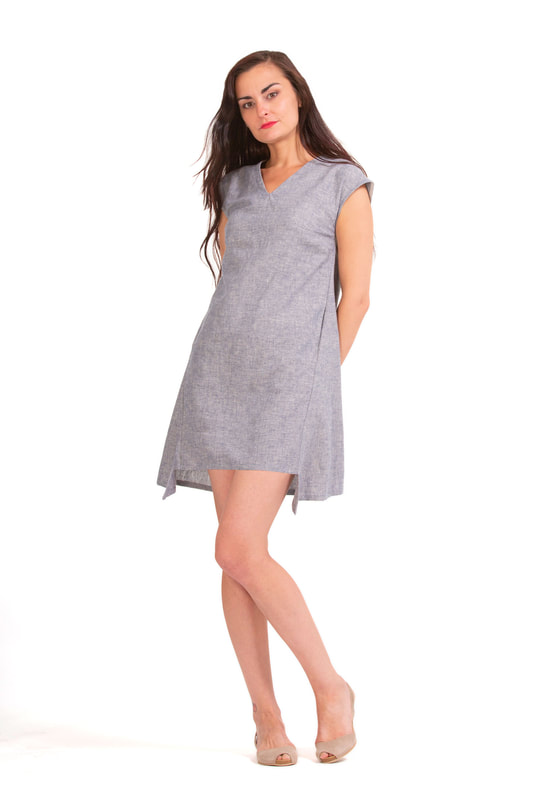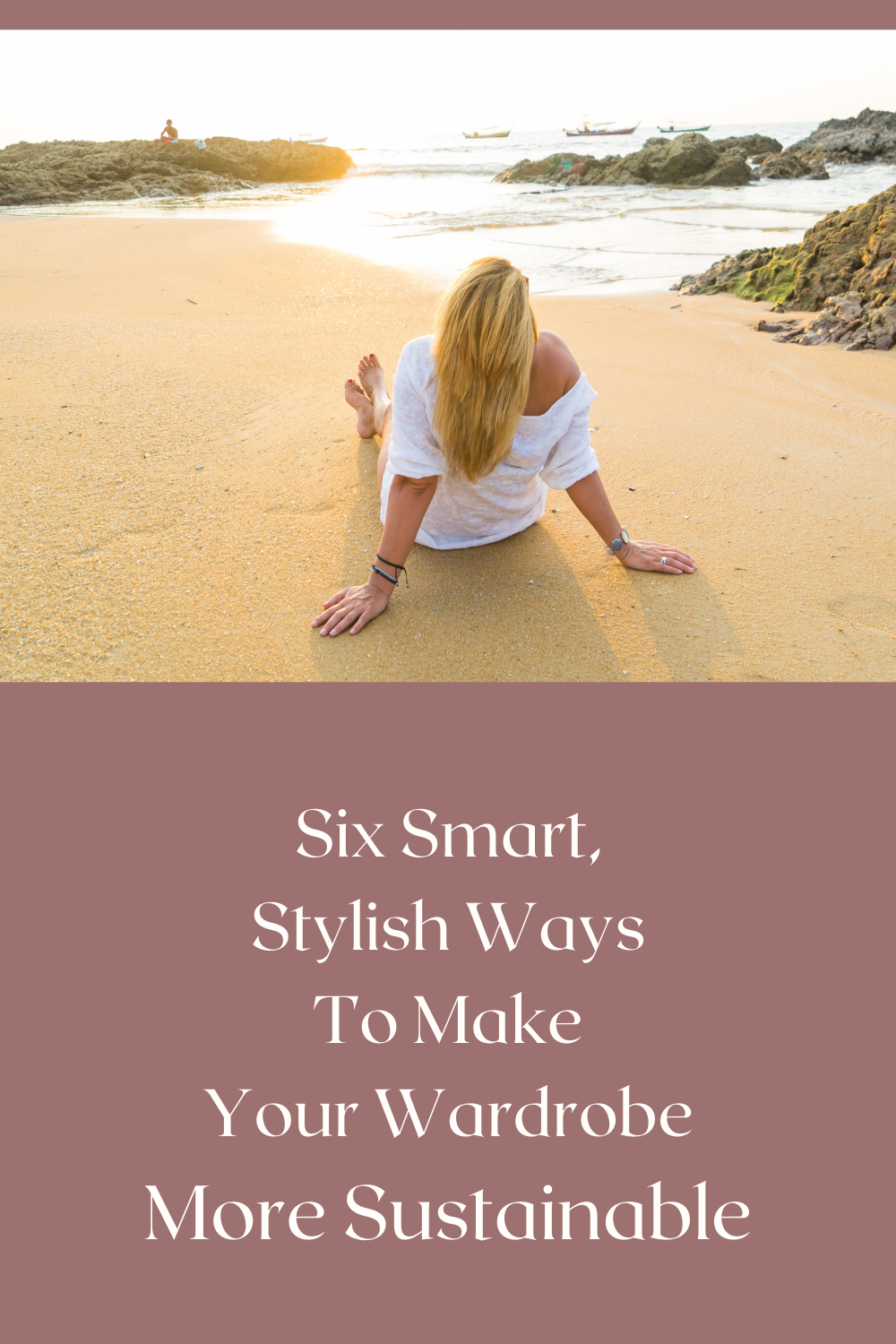 Aster dress in 100% Tencel lyocell
Aster dress in 100% Tencel lyocell
As our awareness grows, so does demand for products that are healthier for our bodies and for our planet. We now enjoy a wide variety of choices in organic foods, and this is a direct result of food producers responding to consumer demand.
When it comes to clothing, the movement towards ethical production and sustainability has only just begun. With continued persistence on the part of designers, eco-responsible retailers, and you, more and more sustainable fabric choices are appearing each year. Here are some that I use right now:
Organic cotton
There is a lot of greenwashing in the world today, but the difference between conventional and organic cotton is HUGE. Conventional cotton still enjoys a reputation of being "clean" and "natural", when in fact it is anything but. Conventional cotton makes up 2.4% of the world's crop land, but its production uses approximately 24% of the world’s insecticides and about 11% of the world’s pesticides. Cotton farm workers spend their days applying chemicals to crops on the field, compromising their health. These same chemicals also poison the groundwater and soil, leading farmers to require even more chemical fertilizers to grow their crops. But cotton is not all doom and gloom! Organic cotton has the same great look and feel of conventional cotton, but is completely free of destructive pesticides and chemical fertilizers. Instead, organic cotton farmers work with ecological processes, biodiversity, and cycles adapted to local conditions to sustain the health of soils, ecosystems, and people. It's a win-win!
Bamboo
Bamboo is one of the fastest growing plants in the world, and once harvested can replenish itself within a year. It needs very little water and no chemicals or fertilizers to grow, and is completely biodegradable. Bamboo also absorbs more carbon dioxide from the air than cotton and timber, and releases more oxygen into the environment, too!
Hemp
Hemp plants grow quickly and densely with no need for herbicides or pesticides, and further enable sustainability by leaving the soil in excellent condition for succeeding crops. The long fibres of the hemp plant require only minimal processing to be spun into fabrics, which are known for their durability. Hemp is also highly breathable, hypoallergenic, and improves over time with washing and wear.
Linen
Derived from the flax plant, linen is the strongest of all natural fibres. It is grown with little or no chemical fertilizer, and all parts of the plant can be used after harvesting to create multiple byproducts so nothing is wasted. Linen is also very cool and breathable, making it an excellent choice for summer wear.
When it comes to clothing, the movement towards ethical production and sustainability has only just begun. With continued persistence on the part of designers, eco-responsible retailers, and you, more and more sustainable fabric choices are appearing each year. Here are some that I use right now:
Organic cotton
There is a lot of greenwashing in the world today, but the difference between conventional and organic cotton is HUGE. Conventional cotton still enjoys a reputation of being "clean" and "natural", when in fact it is anything but. Conventional cotton makes up 2.4% of the world's crop land, but its production uses approximately 24% of the world’s insecticides and about 11% of the world’s pesticides. Cotton farm workers spend their days applying chemicals to crops on the field, compromising their health. These same chemicals also poison the groundwater and soil, leading farmers to require even more chemical fertilizers to grow their crops. But cotton is not all doom and gloom! Organic cotton has the same great look and feel of conventional cotton, but is completely free of destructive pesticides and chemical fertilizers. Instead, organic cotton farmers work with ecological processes, biodiversity, and cycles adapted to local conditions to sustain the health of soils, ecosystems, and people. It's a win-win!
Bamboo
Bamboo is one of the fastest growing plants in the world, and once harvested can replenish itself within a year. It needs very little water and no chemicals or fertilizers to grow, and is completely biodegradable. Bamboo also absorbs more carbon dioxide from the air than cotton and timber, and releases more oxygen into the environment, too!
Hemp
Hemp plants grow quickly and densely with no need for herbicides or pesticides, and further enable sustainability by leaving the soil in excellent condition for succeeding crops. The long fibres of the hemp plant require only minimal processing to be spun into fabrics, which are known for their durability. Hemp is also highly breathable, hypoallergenic, and improves over time with washing and wear.
Linen
Derived from the flax plant, linen is the strongest of all natural fibres. It is grown with little or no chemical fertilizer, and all parts of the plant can be used after harvesting to create multiple byproducts so nothing is wasted. Linen is also very cool and breathable, making it an excellent choice for summer wear.
Lyocell
Sometimes called by it's brand name Tencel, Lyocell is an all-natural fabric made from the pulp of eucalyptus trees which are grown in sustainable forests. Lyocell uses 100 times LESS water in it's production process than does conventional cotton, and 99% of the non-toxic solvent used is recovered. It is also naturally anti-bacterial and 100% biodegradable.
Sometimes called by it's brand name Tencel, Lyocell is an all-natural fabric made from the pulp of eucalyptus trees which are grown in sustainable forests. Lyocell uses 100 times LESS water in it's production process than does conventional cotton, and 99% of the non-toxic solvent used is recovered. It is also naturally anti-bacterial and 100% biodegradable.
Modal
The brand of Modal that I use in my collections is made from sustainably harvested beech trees, which thrive naturally without the need for artificial irrigation and provide an important habitat to a wide variety of animals. Since the beech tree pulp is produced at the same site as the fiber itself, the production process is gentle on it's use of energy and other resources.
The brand of Modal that I use in my collections is made from sustainably harvested beech trees, which thrive naturally without the need for artificial irrigation and provide an important habitat to a wide variety of animals. Since the beech tree pulp is produced at the same site as the fiber itself, the production process is gentle on it's use of energy and other resources.
A note about Recycled and Deadstock fibres
When clothing tags tell us that the material is recycled, it usually means that it's made from plastic waste such as PET bottles. Compared to virgin polyester fibres made from raw material, recycled polyester does have environmental advantages. However, since plastics are not biodegradable, their fibres will end up back in the oceans in the form of microplastics. Even when it's recycled, simply washing polyester clothing releases microfibres into waterways. These pollute entire food chains, kill land and marine wildlife, and endanger human health.
The same goes for deadstock fabrics, also known as overstock, surplus or jobber fabric, if they are made of polyester. Polyester is the world's most widely used fibre, representing about 52% of global fibre production. So while recycling is better than not recycling, it's not the final answer. Sustainable solutions like organic cotton, lyocell, hemp, and linen already exist. They make greener clothes, and don't contribute to plastic waste or microfibrer pollution.
If you already own a lot of polyester clothing, consider investing in a microfibre filter for your washing machine. And when it comes time to replace these items of clothing, look for biobased fabrics in styles you see yourself wearing at least 30 times.
When clothing tags tell us that the material is recycled, it usually means that it's made from plastic waste such as PET bottles. Compared to virgin polyester fibres made from raw material, recycled polyester does have environmental advantages. However, since plastics are not biodegradable, their fibres will end up back in the oceans in the form of microplastics. Even when it's recycled, simply washing polyester clothing releases microfibres into waterways. These pollute entire food chains, kill land and marine wildlife, and endanger human health.
The same goes for deadstock fabrics, also known as overstock, surplus or jobber fabric, if they are made of polyester. Polyester is the world's most widely used fibre, representing about 52% of global fibre production. So while recycling is better than not recycling, it's not the final answer. Sustainable solutions like organic cotton, lyocell, hemp, and linen already exist. They make greener clothes, and don't contribute to plastic waste or microfibrer pollution.
If you already own a lot of polyester clothing, consider investing in a microfibre filter for your washing machine. And when it comes time to replace these items of clothing, look for biobased fabrics in styles you see yourself wearing at least 30 times.



